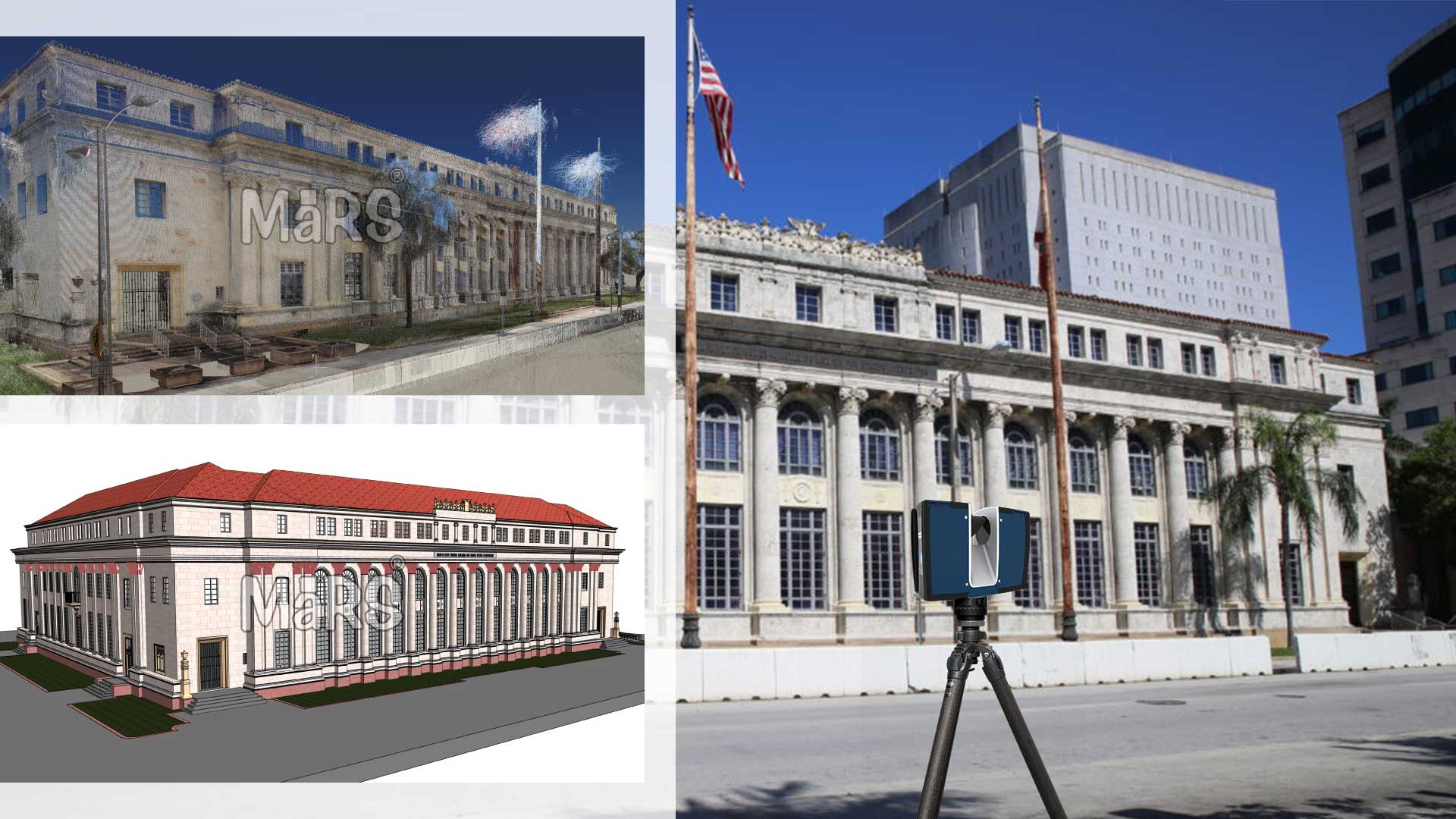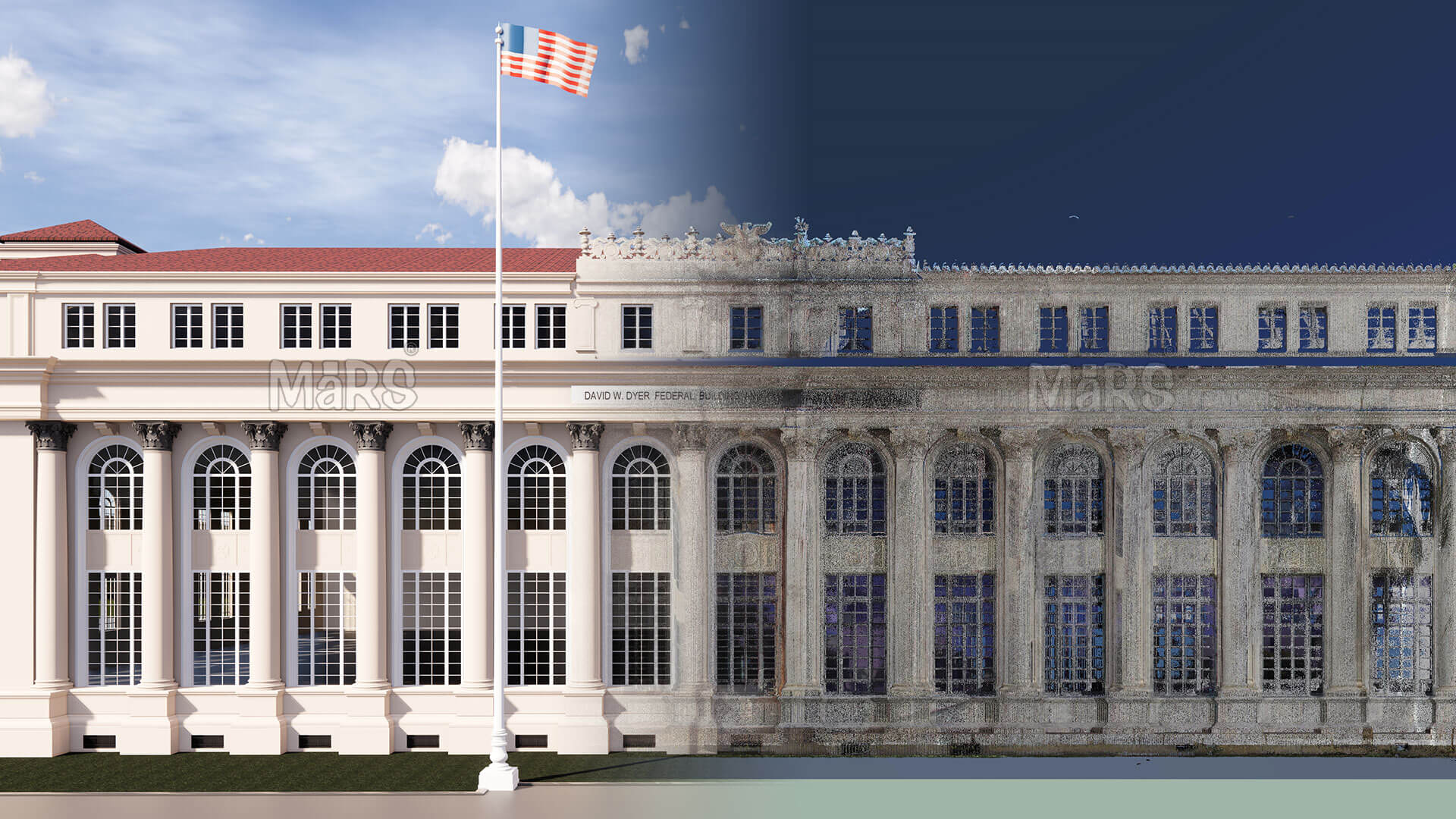Scan to BIM (Building Information Modeling) is an innovative technology that uses advanced 3D laser scanning and photogrammetry to capture the precise physical details of a building or monument. This process converts real-world data into accurate, detailed digital models, which are crucial for the renovation, restoration, and maintenance of historic structures. For historic monuments, where preserving original features and structural integrity is essential, Scan to BIM offers a powerful solution.
The main goal of Scan to BIM services is to provide a reliable and detailed base for renovation, restoration, and maintenance projects. This technology is especially useful for restoring historic monuments, where preserving original features and structural integrity is essential.
The detailed models created through laser scanning improve the planning and execution of restoration projects, ensuring the cultural and historical value of monuments is preserved. These models help conservators and restoration experts understand the current condition of the monuments, identify areas that need repair, and plan restoration efforts more effectively.
Benefits of Scan to BIM in the Restoration of Historic Monuments
High Accuracy in Capturing Existing Conditions
One of the primary advantages of Scan to BIM is its ability to provide exceptional accuracy when capturing the current conditions of historic structures. Using 3D laser scanning and photogrammetry, Scan to BIM technology creates detailed, high-resolution digital models that reflect the true state of a building. Every element of the structure—whether it’s the walls, ceilings, or intricate architectural details—can be captured with remarkable precision.
This level of accuracy ensures that no detail is overlooked, which is particularly important when working with historic monuments. Restoration teams can rely on the data to make informed decisions, ensuring that repairs are done in a way that respects the building’s historical integrity.
Detailed Documentation of Historic Structures
Point Cloud to BIM offers a comprehensive digital record of historic structures, capturing every architectural and structural detail with high resolution. This documentation serves as an invaluable archive for future restoration work, research, and reference. It includes detailed information about unique features like decorative moldings, stone carvings, and other elements that define the building’s historical character.
With Scan to BIM, these digital archives can be easily shared with architects, conservators, and funding bodies, improving communication and supporting preservation efforts.
Maintaining Original Design Elements
One of the key benefits of BIM is the ability to preserve the original features and details of historic monuments. These services capture every element of a structure with high precision, ensuring that the unique characteristics of the building are maintained during the restoration process.
Scanning to BIM provides a detailed digital model that helps conservators plan restorations with a clear understanding of the original design. This particular documentation helps in duplicating original features accurately, ensuring that the restoration work honors the historical significance of the monument.
Improving Planning and Decision-Making
Scan to BIM services are essential for informed decision-making in restoration projects. The detailed digital models provide a comprehensive overview of the existing conditions, enabling project teams to assess the structure’s needs accurately. This information is vital for developing effective restoration strategies and identifying areas that require immediate attention. With accurate data, stakeholders can make informed decisions that improve project efficiency and outcomes, ensuring the successful preservation of historic monuments.

Process of Using Scan to BIM for Restoration
1. Initial Site Survey and Data Collection
The process of using Scan to BIM for historic restoration begins with the setup of advanced scanning equipment. Scan to BIM services employ high-resolution 3D laser scanners and photogrammetry to capture precise measurements of the historic structure. The setup phase is critical to ensuring that the data collection is accurate and free from errors.
During this initial survey, Point Cloud to BIM services take detailed 3D scans of the entire monument or building. This step collects comprehensive data about the building’s dimensions, shapes, and architectural features, producing a digital snapshot that accurately represents the current state of the structure. The 3D scans capture even the most intricate details, which are crucial for planning the restoration work.
2. Data Processing and Model Creation
After the initial data collection, the scan data is processed and transformed into detailed BIM models. This stage involves converting the raw 3D scan data into a precise digital representation of the building’s structure. The processed model includes all the measurements and features captured during the scanning phase, ensuring that every architectural detail is accurately depicted.
Additionally, the BIM models are enriched with historical data, such as information about the building’s original design, materials, and construction techniques. These enhancements provide a deeper understanding of the monument’s architectural history and help guide the restoration process. By incorporating such detailed data, Scan to BIM services create a comprehensive and accurate model that supports effective preservation and restoration efforts.
3. Analysis and Assessment
Once the BIM model is created, the next step is to conduct a thorough analysis of the structure. Scan to BIM technology aids in identifying potential structural issues, such as deterioration, cracks, or damage that need to be addressed during the restoration process. The detailed digital model makes it easier to pinpoint areas that require immediate attention, ensuring that the restoration team can prioritize repairs accordingly.
In addition to structural analysis, the current conditions of the historic monument are compared to historical records and original design documents. This comparison helps assess how the structure has changed over time and ensures that the restoration work remains aligned with the building’s historical significance. The accurate and up-to-date digital model facilitates this analysis, offering a reliable foundation for any restoration decisions.
Looking ahead, the future possibility of Scan to BIM in historic restoration is advantageous. Continued innovation in scanning technology and digital modeling will further enhance the accuracy and efficiency of restoration efforts. As more historic structures benefit from these advances, the preservation of cultural heritage will become even more powerful and complete.
Conclusion
Scan to BIM technology has changed the restoration of historic monuments by providing high accuracy, detailed documentation, and precise preservation of original features. It enables informed decision-making, simplifies the restoration process, and improves public engagement. Despite some challenges, the continued growth of BIM promises to further improve the preservation of our cultural heritage, ensuring that historic monuments are safeguarded for future generations to appreciate and learn from.


Recent Comments